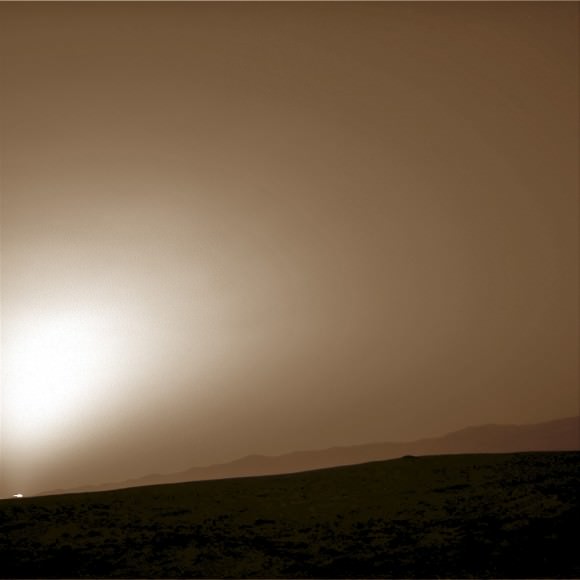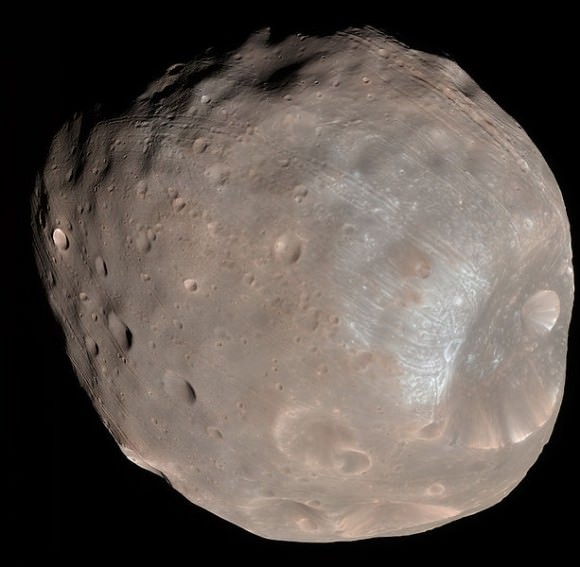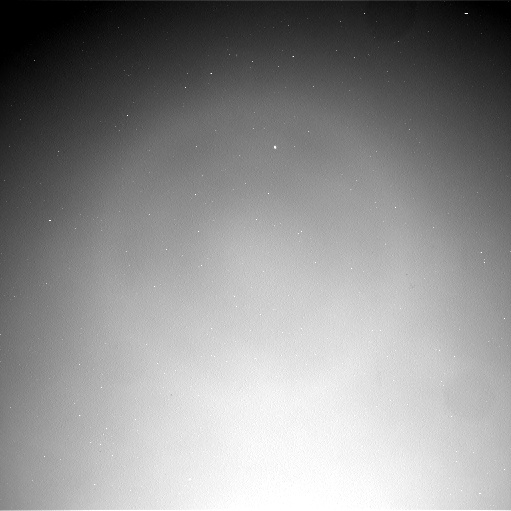Mars moon Phobos (above, center) rising in the night time Martian sky shortly after sunset in this still image from a movie taken by NASA’s Mars rover Curiosity on Sol 317, June 28, 2013. The apparent ring is an imaging artifact. Credit: NASA/JPL-Caltech
See the complete ‘Phobos Rising’ movie below [/caption]
Every once in a while when the time is just right and no one is looking, Curiosity’s Earthly handlers allow her some night time Martian delights.
In this case a pair of rising and setting celestial events bookend another magnificent week in humankinds exploration of the Red Planet – courtesy of NASA.
This past week NASA’s Curiosity rover captured esthetically stunning imagery of Phobos rising and Our Sun setting on Mars.
Phobos is the larger of Mars pair of tiny moons. The other being Diemos.
On June 28, (Sol 317) Curiosity aimed her navigation camera straight overhead to captured a breathtaking series of 86 images as Phobos was ascending in the alien evening sky shortly after sunset.
NASA combined these raw images taken over about 27 minutes into a short movie clip, sped up from real time.
Video Caption: ‘Phobos Rising’ – This movie clip shows Phobos, the larger of the two moons of Mars, passing overhead, as observed by NASA’s Mars rover Curiosity in a series of images centered straight overhead starting shortly after sunset. Phobos first appears near the lower center of the view and moves toward the top of the view. The images were taken on June 28, 2013. The apparent ring is an imaging artifact. Credit: NASA/JPL-Caltech
The pockmarked and potato shaped moon measures about 26.8 × 22.4 × 18.4 kilometers.
Phobos orbits barely some 6,000 km (3,700 mi) above the Martian surface. One day far in the future, it will crash and burn.
On June 22, Curiosity snapped an evocative series of Martian sunset photos as Sol set behind the eroded rim of Gale Crater – see below.
In the 2030’s, Humans may visit Phobos first before setting foot on the much more technically challenging Red Planet.
In the meantime, enjoy the otherworldly view!

Martian sunset vista at Gale crater rim snapped by Curiosity on Sol 312, June 22, 2013. Colorized navcam image. Credit: NASA/JPL-Caltech/Ken Kremer/Marco Di Lorenzo


